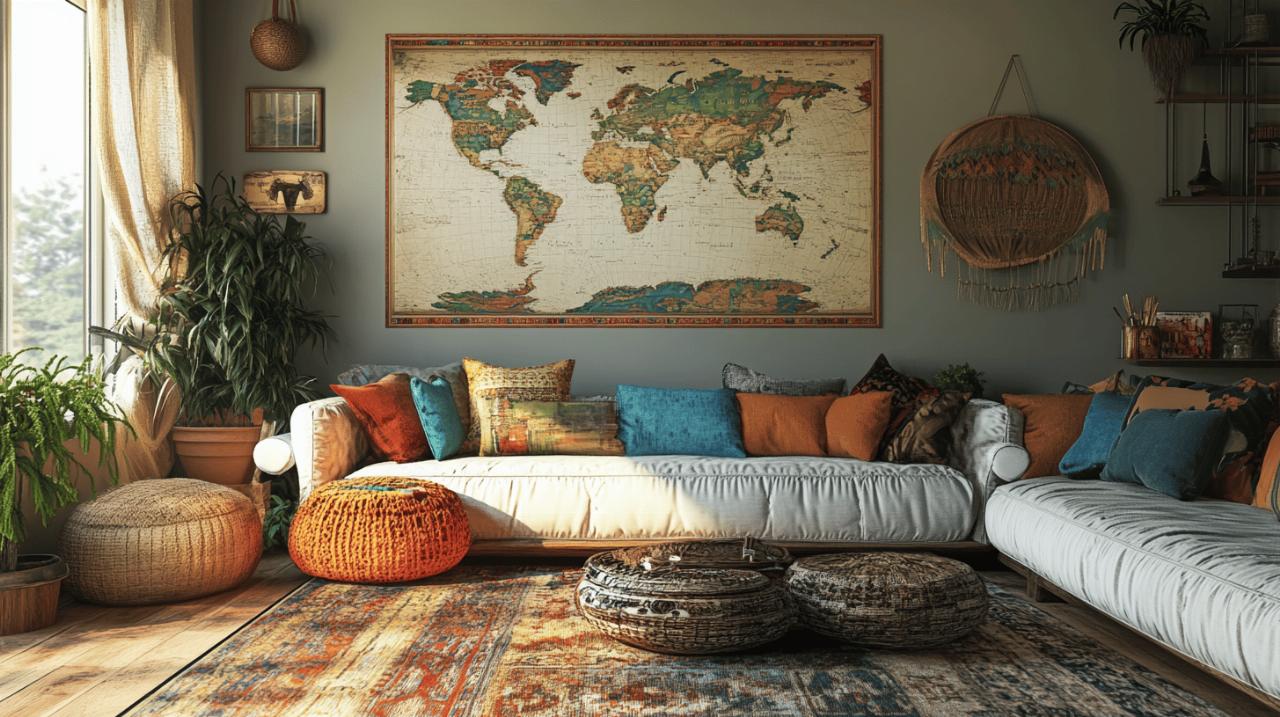Modern homes now reflect more than just places to live—they embody our values, needs, and aesthetic preferences. Designing living spaces that balance beauty with practicality requires innovative thinking and fresh approaches to organization and functionality.
Transformative space solutions
As our living environments evolve, homeowners increasingly seek versatile designs that adapt to changing lifestyles while maintaining stylistic integrity. The latest interior design trends for 2025 showcase this evolution, with emphasis on sustainability, wellness integration, and personalized spaces that tell unique stories.
Modular furniture systems
The rise of adaptable furniture represents a significant shift in home design philosophy. These systems feature interchangeable components that reconfigure based on immediate needs, maximizing floor space while minimizing waste. Jewel tones like emerald green and sapphire blue dominate these pieces, creating visual interest while maintaining practicality. Many designers from Casa Idea magazine highlight how these systems work particularly well with Japandi aesthetics, merging Japanese minimalism with Scandinavian functionality for clean, purposeful spaces adorned with natural elements and textured surfaces.
Multifunctional room designs
Living areas now serve multiple purposes through thoughtful planning and innovative architecture. Rooms transform from workspaces to entertainment zones through strategic furniture placement and technological integration. This approach embraces color-drenched spaces using single hues throughout walls, furnishings, and accessories. Current trends favor earthy neutrals like terracotta and sage alongside warm metallics such as bronze and copper. The Casa Idea collection demonstrates how vintage influences and artisanal pieces contribute to these versatile environments, creating spaces that feel both timeless and responsive to contemporary needs.
Sustainable material integration
The integration of sustainable materials into home design represents a pivotal shift in how we approach our living spaces. As we look toward interior design trends for 2025, sustainability has emerged as more than just a preference—it's becoming essential. Modern homes are increasingly incorporating eco-friendly materials that reduce environmental impact while creating aesthetically pleasing spaces. This movement toward sustainable design aligns perfectly with broader wellness trends, allowing homeowners to create spaces that are both beautiful and responsible.
Design styles like Japandi—which blends Japanese minimalism with Scandinavian functionality—incorporate sustainable elements naturally, focusing on natural materials and long-lasting quality. Meanwhile, earthy neutrals such as terracotta, ochre, and sage are dominating color trends, reflecting our desire to bring the outside world into our homes. Textured surfaces from sustainable sources add depth and interest to spaces without compromising environmental values.
Eco-friendly accent pieces
Eco-friendly accent pieces offer an accessible entry point into sustainable home design. Statement lighting fixtures crafted from recycled materials or sustainable resources can transform a room while minimizing environmental impact. Artisanal and handcrafted pieces made from responsibly sourced materials not only support sustainable practices but also add unique character to your space that mass-produced items cannot match.
Natural stone accents sourced from ethical quarries provide durability and timeless beauty while minimizing carbon footprint. Many designers are incorporating warm metallics like gold, bronze, and copper from recycled sources, giving spaces luxury appeal with environmental responsibility. Smart technology integrated discreetly into these accent pieces can further enhance sustainability by optimizing energy usage while maintaining the aesthetic integrity of the space.
Repurposed element aesthetics
Adaptive reuse stands at the forefront of sustainable design innovation. Repurposing old buildings and furniture pieces breathes new life into existing materials, reducing waste while creating spaces with unique character and history. Vintage and retro influences are gaining prominence as designers recognize both the aesthetic and environmental value of incorporating previously loved items into modern spaces.
The beauty of repurposed elements lies in their versatility—they can be incorporated into minimalist designs for subtle texture or used boldly in maximalist spaces that celebrate abundance of colors and patterns. Pattern mixing with vintage textiles alongside modern sustainable fabrics creates rich visual interest while honoring craftsmanship from different eras. These repurposed elements often become focal points in home design, telling stories through their patina and construction while contributing to a more sustainable approach to interior design.







